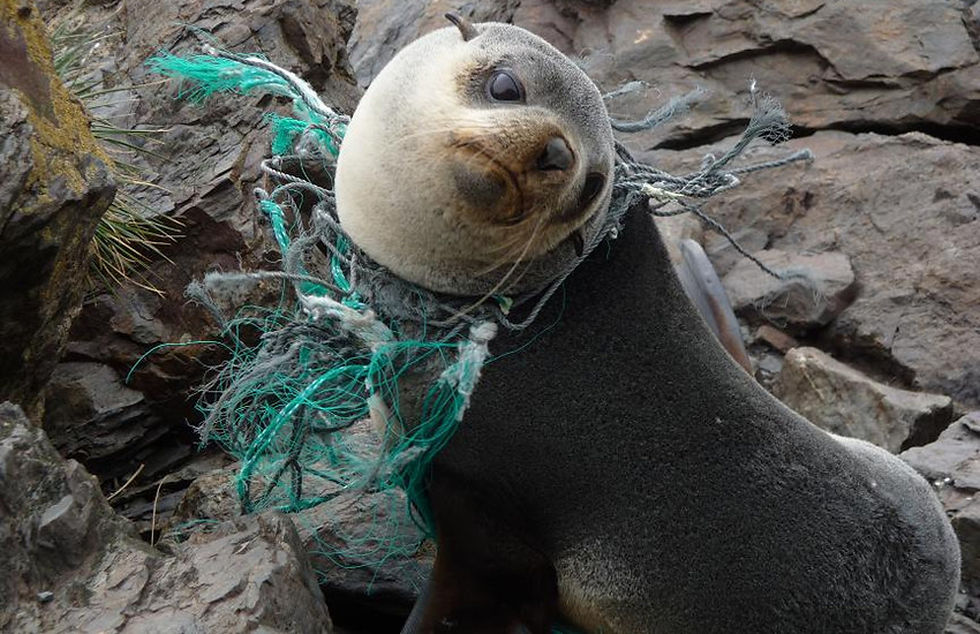top of page
Final Project Research Submission #1:
Pacific Ocean Cleanup Array
Overview
Pacific Ocean cleanup array is the project that aims to remove plastic pathes from the ocean. It is estimated that a network of cleanup arrays could collect up to 80% of plastic in the Pacific Ocean in the 5 years after deployment. On top of that collecting debris translates into 5.16USD per kilogram of plastic, which potentially translates into 35 million US dollars per year.
Problem
Every year part of 300 million tons of yearly produced plastic enter the ocean and accumulates at offshore areas called Garbage Patches. The accumulation accurs due to ocean currents, however other factors such as storms or animals affect the movement of plastic as well.

Ocean currents determine accumulation and movement of plastic
This causes damage to marine species who become entangled in debris or have an internal blockage after eating the plastic. When animals eat the plastic, dangerous chemicals move up the food chain.




1/3
Examples of animals damaged by plastic in the ocean
On top of that floating plastic also causes damage to vessels and estimated to cost $1.27 billion annually. Moreover, removal of plastic from the coastlines costs up to $25,000 per ton of plastic.
Solution
Since the plastic is moving because of the rotating currents the idea is to collect the plastic by placing an array of floating barriers stabilized by a floating anchor that collect and "suck up" the plastic into a collecting container. Previous solution proposed to install nets on the ships and actively "hunt" for plastic. This approach proves to be expensive and time consuming. Cleanup array hopes to clean up the ocean from plastic in the fraction of time, be self sufficient and partly cover the costs by recycling the collected plastic. On top of that the barriers mentioned above are intended to be safer than the nets thus not harming the marine wildlife.



1/2
Prototype Concept Images
Data Overview
-
Tests show that most of the plastic accumulates at 0.1 meters to 1 meters from the surface of the ocean.
-
It is projected that micro plastics (below 2cm) will not be caught by the array. However, by capturing larger pieces of plastic the array prevents further degradation of the plastics into smaller fragments.
-
Waves predominantly derive from north-west and 95% of waves are below 4.5-5.5 meters with the maximum wave being 12.2 meters.
-
The storage capacity of the array allows for up to 45 days of storage of collecting plastic. The plastic then has to be removed from the array by a ship.
-
The cost of one array is estimated to be around $15 million dollars.
-
Currently Northern Pacific gyre is expected to contain 150 millionkilograms of plastic.

Costs table
Personas
Persona:
Photo:
Name:
Job Title:
Demographic:
Goals/ Tasks:
Environment:
Quote:
Investor who provide initial funding to the project and expect return

Marc Benioff
CEO of Salesforce
-
53 years old
-
Married
-
Bachelor of Business Administration
-
Review start-ups for investment opportunities to maximize profit
-
Writing books
-
Managing hundreads of employees
-
Expert in software engeneering
-
Involved in cutting edge software production
-
Uses the web at least 6 hours a day
"You must always be able to predict what's next and then have the flexibility to evolve."
Persona:
Photo:
Name:
Job Title:
Demographic:
Goals/ Tasks:
Environment:
Quote:
Fisherman

-
Uses the web a an hour a day to analyze the weather
-
Forced to pay for ship repairs more often due to damage from plastic debries
-
47 years old
-
Married
-
High School Education and Military Service
Captain of the local fishing vessel
-
Analyze best fishing areas
-
Hire crew for each season and manage it
-
Maximize profit and minimize risks
Jhon Blow
"Hey, you promised me a shitload of fish!"
Persona:
Photo:
Name:
Job Title:
Demographic:
Goals/ Tasks:
Environment:
Quote:
Endagered Species Officer

Maria Bass
-
Emposes fees on vessel and other marine technology owners
-
Monitors endagered species
Senior Marine Specialist
-
33 years old
-
Single
-
Biology PhD
-
Uses the web ten hours a day to analyze and monitor the wild life
-
Writes reports on companies or individuals who endanger the wild life
"We can design conservations strategies that have greater positive impacts."
References
Where Are the Pacific Garbage Patches? (n.d.). Retrieved July 09, 2017, http://response.restoration.noaa.gov/about/media/where-are-pacific-garbage-patches.html
Slat, B. (2014). How the oceans can clean themselves. Independently published book .
bottom of page